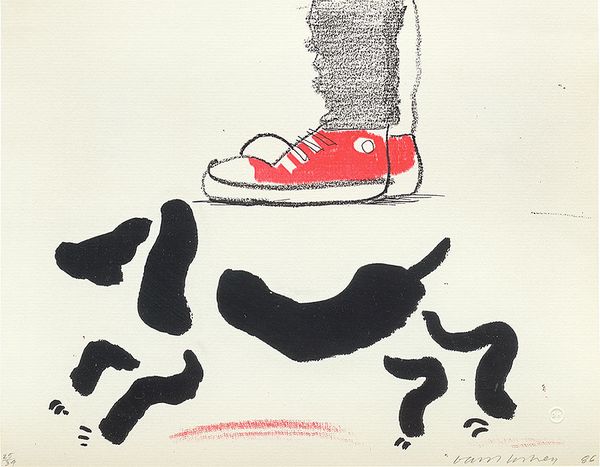David Hockney, Ian and Heinz, July 1986, 1986.
In February 1986, David Hockney was experimenting with a photocopier when he stumbled across a new creative process that would profoundly shape his artistic output for the following months. Photocopiers had become a staple in most offices by the 1980s and were used for banal, reproductive tasks. Yet, in the photocopier the artist saw a device that was simultaneously a camera and a printing press. Fascinated by the potential of such a machine, the ever-innovative Hockney embraced new technologies in edition-making throughout his career (be they advances in etching or computer programs), and his home-made prints afforded him yet another new technique to play with, without diminishing his concerns for mark making and layering of vibrant colors. Charming in their simple execution and engaging subject matter, the home-made prints are the product of an artist seeking the joy of representation with any possible media.
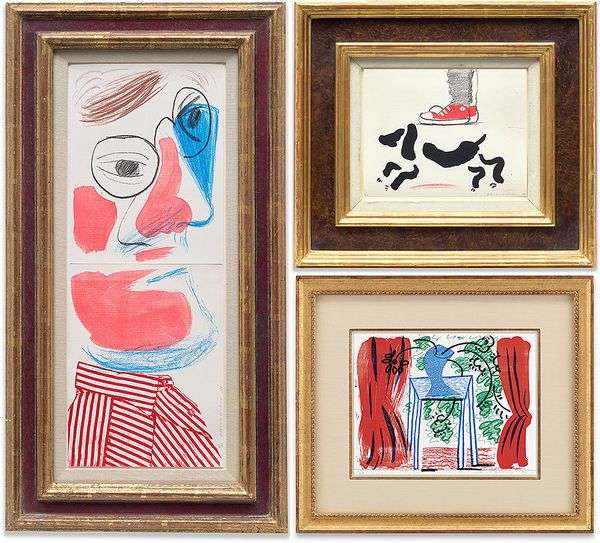
Left: David Hockney, Self-Portrait, July 1986, 1986. Top Right: David Hockney, Ian & Heinz, July 1986, 1986. Bottom Right: David Hockney, Still Life with Curtains, March 1986, 1986.
Once the possibilities of the photocopier had been discovered, Hockney purchased three machines in quick succession. In effect, he was now able to run his own print shop, and he relished the spontaneity and independence this gave him. The process of creating a home-made print followed the basics of traditional color printing techniques: Hockney used a separate piece of paper for each color and copied these onto successive sheets, in a similar fashion to how a printer would produce lithographs from plates. The standardized paper sizing of a photocopier automatically aligned areas of color and eliminated the intermediary stages of using separate stones or plates. By printing from paper to paper, layering shapes as he went, Hockney’s original marks were immediately transferred, allowing him to experiment with color and texture in real-time.
The xerox machine is really fascinating… because I realize it’s a camera and a printing machine. – David Hockney
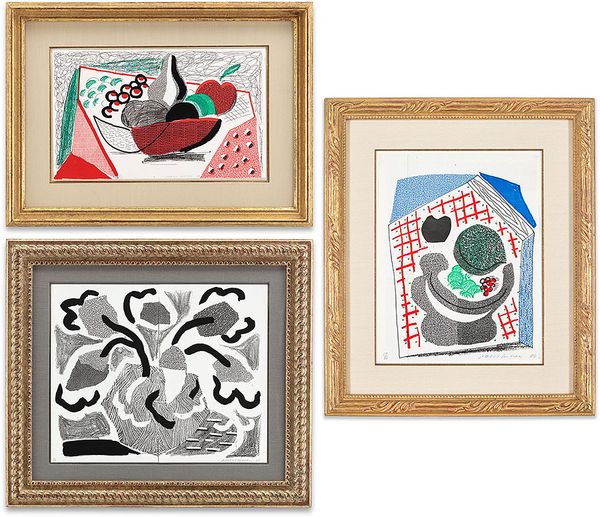
Top Left: David Hockney, Apples, Pears & Grapes, May 1986, 1986. Bottom left: David Hockney, Grey Blooms, May 1986, 1986. Right: David Hockney, Bowl of Fruit, April 1986, 1986.
While the photocopier allowed Hockney to identically replicate textures, the quickly interchangeable ink cartridges also allowed the artist to easily experiment with color. As exemplified in Bowl of Fruit, April 1986, reds, blues, and greens take precedence alongside blacks and greys, indicating which pigments Hockney felt were the most visually engaging but also emphasizing which cartridges were more readily available within the CMYK spectrum. As no drying time was required, Hockney frequently overprinted sections to create a sense of depth and density of color. In prints such as Grey Blooms, May 1986, Hockney’s captivation with printing in black is most clearly revealed. Unlike other printing inks, photocopier inks did not contain oil — which adds a reflective quality to the finish of a print — and instead relied on heat to bond the powdered pigment to the paper. Subsequently, the black produced in the home-made prints is incredibly rich, “like a void,” as Hockney described it.
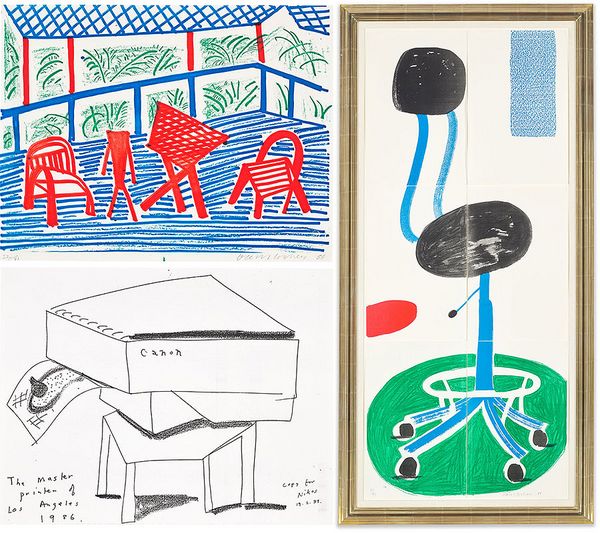
Left: David Hockney, Two Red Chairs and Table, March 1986, 1986. Bottom Left: David Hockney, The Master Printer of Los Angeles, 1986/88. Right: David Hockney, Office Chair, 1988.
New technologies have started revolutions that need not frighten us… They can be humanized by artists. – David Hockney
The restricted size of paper was a slight constraint to the photocopiers of the 1980s. Not one to accept limitations, Hockney produced composite images, such as Office Chair and Self Portrait, July 1986, printing across multiple sheets and expanding his surface beyond the photocopier’s capacities to create more ambitious, larger-scale works. As an indicator of the complexity of his home-made prints, Hockney attempted to produce each image in an edition of 60. There were no proofs, and the success of each print run is indicated by the final edition size: Self Portrait, July 1986 and Man Reading Stendhal, July 1986 were complete runs of 60 editions, whereas the final number of Two Red Chairs and Table, March 1986 was only 31 prints — pointing to Hockney’s refinement of the process between March and July of the same year and the differing complexities of the compositions he attempted.
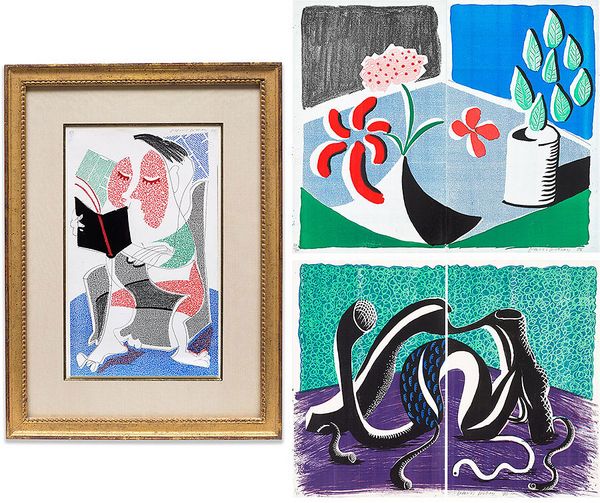
Left: David Hockney, Man Reading Stendhal, July 1986, 1986. Top Right: David Hockney, Red Flowers and Green Leaves, Separate, May, 1988. Bottom Right: David Hockney, Extending, February (Diptych), 1990.
Through his home-made prints, Hockney sought to humanize printing techniques and encourage people to consider the construction of images. Following Hockney’s experiments with photographic collages and foreshadowing his early embrace of the iPad as an artistic medium, the home-made prints attest to his championing of new technologies as creative tools. By using these technologies, Hockney hoped to democratize printmaking even further, making his works increasingly relevant and available. The importance of this message to Hockney is exemplified through his decision to contain each print in an opulent artist-specified gold frame, clearly elevating them as significant objects within his oeuvre. Immediately popular, the works toured in exhibitions from New York, Los Angeles, Tokyo, and London in the years of 1986 and 1987 alone, demonstrating Hockney’s ability to master any technique he tried.
Recommended Reading
